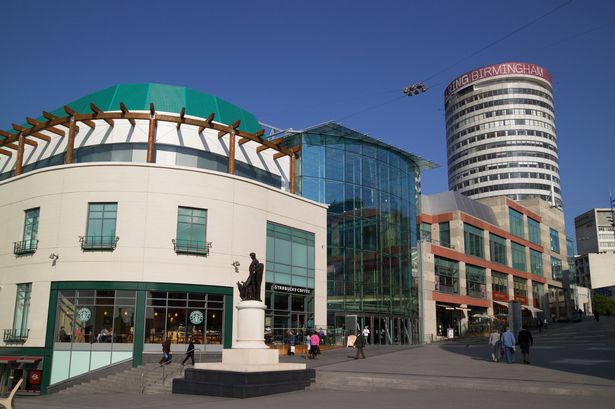The bustling heart of Birmingham’s Bullring shopping centre was abruptly silenced on a Friday night as a man tragically fell from an upper floor, succumbing to his injuries shortly after. The incident, occurring just before the centre’s closing time, sent shockwaves through the remaining shoppers and staff, transforming the vibrant retail hub into a scene of distressing emergency response. West Midlands Police swiftly confirmed the fatality, initiating an investigation to determine the circumstances surrounding the fall. The sudden and unexpected nature of the event cast a somber pall over the city, raising questions about the safety and security measures in place at such a prominent public space.
The tragic incident immediately drew attention to the potential vulnerabilities within the Bullring’s architectural design. The open atrium structure, a hallmark of modern shopping centres, while aesthetically pleasing and designed to maximize natural light and create a sense of spaciousness, unfortunately also presents a potential risk for falls from height. Authorities will likely scrutinize the existing safety barriers and protocols, evaluating their adequacy in preventing such incidents. This review could encompass the height and robustness of railings, the presence of signage warning against climbing or leaning over barriers, and the effectiveness of surveillance systems in monitoring potentially risky behavior. Furthermore, the investigation may explore whether any contributing factors, such as structural deficiencies or inadequate lighting, played a role in the tragic event.
Beyond the physical aspects of the shopping centre, the incident underscores the broader challenge of ensuring public safety in densely populated public spaces. The Bullring, a popular destination attracting a diverse crowd, including families, tourists, and shoppers of all ages, presents a complex security environment. Managing the flow of people, preventing accidents, and responding effectively to emergencies require a multi-faceted approach. This includes visible security personnel, clear emergency procedures, and robust communication systems to coordinate responses between security staff, emergency services, and shopping centre management. The tragedy at the Bullring highlights the need for continuous evaluation and improvement of these systems to minimize potential risks and ensure a safe environment for all visitors.
The impact of this tragic event extends beyond the immediate scene, echoing through the wider community. The sudden and unexpected loss of life is a devastating blow to the deceased’s family and friends, who are now grappling with grief and seeking answers. The incident also affects the witnesses, both shoppers and staff, who were present at the scene and may be experiencing psychological distress. Providing support and counselling services to those affected is crucial in the aftermath of such a traumatic experience. The wider Birmingham community, too, is likely to feel the impact of this tragedy, prompting discussions about public safety and the responsibility of businesses and authorities to create secure environments.
In the wake of this incident, the Bullring’s management will likely work closely with authorities to implement any necessary changes or improvements to safety protocols and infrastructure. This could involve enhancing physical barriers, increasing security personnel presence, and reviewing emergency response procedures. Furthermore, communication with the public will be essential, both to address concerns and to reassure visitors about the steps being taken to prevent future incidents. The Bullring’s reputation as a safe and enjoyable shopping destination will depend on their demonstrable commitment to addressing the issues raised by this tragedy.
This incident serves as a stark reminder of the inherent complexities of managing safety in large public spaces. The balance between creating an open and inviting environment while mitigating potential risks requires continuous vigilance, proactive measures, and a commitment to learning from tragic events. While investigations will continue to unravel the precise circumstances surrounding this specific incident, the broader lessons learned will undoubtedly inform safety practices and protocols in similar venues across the country, striving to create safer and more secure public spaces for everyone. The focus should now be on providing support to those affected, thoroughly investigating the incident, and implementing meaningful changes to prevent similar tragedies from occurring in the future.














